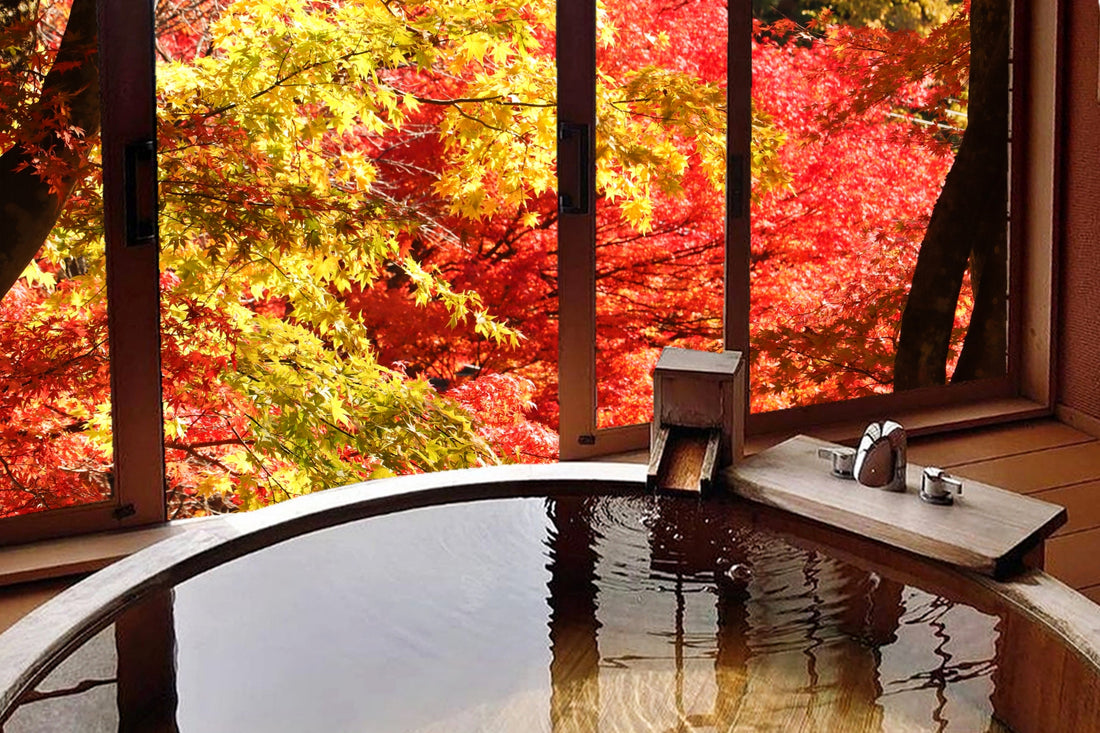Hot springs, or "onsen," are an integral part of Japanese culture, deeply embedded in the daily lives of the Japanese people. With Japan being home to roughly 10% of the world's active volcanoes, it is naturally rich in geothermal hot springs. In this article, we’ll explore the beauty and significance of Japanese hot springs, a cultural treasure that Japan is proud to share with the world, while also comparing them to hot springs in other countries.
Japan’s World-Class Hot Springs
A Wealth of Natural Hot Springs
While the quality of the water is essential, Japan stands out globally for the sheer number of natural hot springs. Let’s take a look at the country’s abundant hot spring resources:
-
Over 27,000 Hot Springs: Japan boasts over 27,000 natural hot springs. The top-ranking prefectures by the number of sources are:
- Oita Prefecture: 4,445 springs
- Kagoshima Prefecture: 2,755 springs
- Shizuoka Prefecture: 2,252 springs
Oita Prefecture leads by a significant margin, and Japan’s combined hot spring output exceeds 2.5 million liters per minute. This makes Japan one of the world’s top destinations for hot springs.
Over 20,000 Onsen Facilities
Japan is home to over 20,000 onsen facilities, including hotels and public baths, spread across all 47 prefectures. While hot springs may feel like a regular part of life for many Japanese, seeing the numbers truly highlights how widespread they are.
Hot Springs as a Vital Part of Japanese Culture
A Long-Standing Tradition
Onsen have been cherished in Japan for centuries, not just as a way to cleanse the body but as a form of spiritual and cultural enrichment. How did this love for hot springs become so deeply rooted in Japanese life?
Historical Love for Hot Springs
Historical records and archeological finds suggest that the Japanese have enjoyed hot springs for over 6,000 years, dating back to the Jomon period. References to hot springs can also be found in ancient texts like the Kojiki and Nihon Shoki. The term "onsen" first appeared in the Fudoki, and since then, hot springs have been valued for their healing properties and the warmth they provide. To the Japanese, natural hot springs have long been seen as sacred, offering both physical and spiritual relief.
Enjoying the Scenery and Atmosphere of Hot Spring Destinations
Many hot spring areas have developed into popular tourist destinations. Beyond simply soaking in the baths, visitors enjoy the scenic beauty of the surrounding hot spring towns and traditional inns (ryokan). Whether you choose an outdoor bath (rotenburo) or an indoor one, part of the charm is indulging in local cuisine and taking in the unique atmosphere of the region.
Healing and Wellness Through Hot Springs
Traditionally, the Japanese practice of "touji" involved visiting hot springs to heal ailments. As transportation improved in the Showa era, more people could visit hot springs not only for healing but for relaxation and wellness. The postwar economic boom saw a rise in group tours, leading to the growth of large-scale inns and hot spring resorts. What started as therapeutic visits evolved into a significant part of Japan’s tourism industry.
How Japanese and Overseas Hot Springs Differ
Hot Springs as Leisure in Other Countries
While Japanese hot springs are often associated with healing and relaxation, in Western countries, hot springs are typically enjoyed more as leisure activities. In Europe and North America, people often bathe in open-air springs as part of a more recreational experience, with less focus on adjusting the water temperature. The natural setting of these springs is key, and the water is often cooler, resembling a gentle swim more than a hot bath.
Medical Hot Springs in Europe
In countries like Germany, Austria, and France, hot springs are frequently associated with medical treatment. These spa towns, known as "Kurorte," often include health treatments, and the cost can sometimes be covered by health insurance. A Kurort offers:
- High-quality natural surroundings
- Proper wellness and therapeutic facilities
- Specialists such as therapists and doctors
These hot springs have specific guidelines for therapeutic use, making them popular not only for healing but for general health and wellness as well.
Bathing Suits Required
In Japan, hot springs are typically enjoyed nude, but in many other countries, wearing swimsuits is the norm. For foreigners visiting Japan, this cultural difference can be surprising, as the idea of communal bathing without clothes is uncommon. Recently, Japan has introduced more leisure-oriented "onsen theme parks" where swimsuits are allowed, catering to international visitors.
Conclusion
For centuries, the Japanese have embraced hot springs not only for health benefits but as a form of cultural expression. Today, Japanese onsen are also a major draw for international tourists. Each hot spring area in Japan offers its own unique qualities, from the scent of the water to its mineral content and healing properties. Exploring Japan’s many hot springs is a fantastic way to experience the depth of this ancient tradition. Why not plan a visit to discover these differences and enjoy the soothing experience for yourself?

